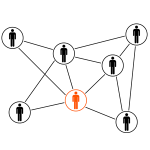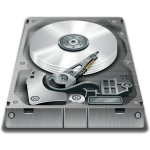 We all know what networks are. They’re arrangements of intersecting horizontal and vertical lines, or even groups of interconnected people or things. Right?
We all know what networks are. They’re arrangements of intersecting horizontal and vertical lines, or even groups of interconnected people or things. Right?
I hate to break it to you (not really) but there’s another definition, too.
Computer networks, or data networks, are a means by which multiple computers (or other devices such as printers, phones, tablets, etc.) are connected, so that they can exchange data, etc.
Computer network version 0.000001 (more-or-less) was called “The Sneakernet”. It was composed of people who transported data from one location to another by loading it onto portable media (probably a floppy drive!) and walking it from one computer to another while wearing their sneakers. Or not. Sneakers may even have been optional.

 Welcome back to the third and final (for now) part of our series on file management.
Welcome back to the third and final (for now) part of our series on file management. You may, by this point in time, have some inkling of my proclivity for all things organization and order.
You may, by this point in time, have some inkling of my proclivity for all things organization and order. It is my firm belief that everyone needs a good, solid backup plan.
It is my firm belief that everyone needs a good, solid backup plan. The subject is not mis-spelled.
The subject is not mis-spelled. Your mouse has a lot of potential.
Your mouse has a lot of potential. Not all mice are created equal, but their performance is primarily based on operating system settings rather than the hardware.
Not all mice are created equal, but their performance is primarily based on operating system settings rather than the hardware. Do you know what your F2 key does? Do you know where your F6 key is? Did you know that they are called “function keys”?
Do you know what your F2 key does? Do you know where your F6 key is? Did you know that they are called “function keys”?